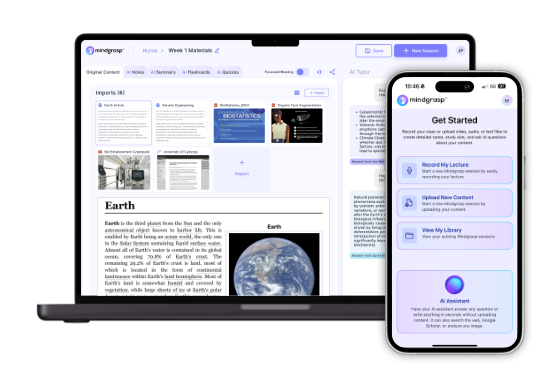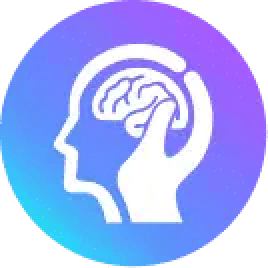
Unlike history or English, cramming for CS exams requires understanding concepts, not just memorizing facts.
We'll need to prioritize high-impact topics from past exams, create a focused study schedule, and use active recall instead of passive reading. Make simple diagrams for complex algorithms, practice actual coding problems, and explain concepts out loud to yourself.
Don't forget short breaks and proper nutrition to keep your brain sharp!
The rest of our guide offers specific strategies for 1-day, 3-day, and week-long cramming plans.
Btw if you need to turn lecture slides into a study guide, check out our Study Guide Creator from Slides which is perfect for last-minute computer science exam cramming! Just upload your slides and bam, get a custom study guide made in seconds.
Why cramming for computer science feels harder than other classes
While most students can pull an all-nighter to memorize history dates or literature quotes, computer science presents a unique cramming challenge. We're not just dealing with facts you can memorize—we're tackling abstract concepts that demand real understanding.
Think about it: when you're cramming for CS, you need to:
- Grasp complex algorithms and data structures (not just remember them)
- Apply programming skills in real-time problem-solving
- Switch between theoretical knowledge and practical coding
- Keep up with constantly evolving languages and tools
What makes it extra tough is how everything builds on previous concepts. Miss understanding linked lists? Good luck cramming hash tables the night before!
Unlike memorizing chemical formulas or historical events, computer science requires us to think both logically and creatively—a tough combo when you're running on coffee at 3 AM.
Boost Your GPA Faster with Mindgrasp
Instantly turn your class notes into smart summaries, flashcards, and quizzes—study less, learn more, and ace your exams.
Try it FreeStep 1: Determine what to study (Prioritize high-impact topics)
Every successful cramming session starts with a critical decision—figuring out exactly what deserves your precious time. We need to be strategic here!
Look through your syllabus and previous exams to identify core concepts that show up repeatedly—things like programming fundamentals and key data structures.
Old exam papers are gold mines—they reveal which topics instructors love to test. Don't waste hours on obscure material when the same algorithm questions appear year after year!
Focus on your weak spots first. Struggling with recursion? That's where you'll see the biggest improvement.
Chat with classmates about what they're studying, and compile your study materials into a condensed guide highlighting essential functions and concepts.
Remember: in crunch time, it's about studying smarter, not longer!
Step 2: Gather your computer science materials and make a quick plan
Now that you've identified what to study, it's time to get your materials in order! Collect everything you'll need: textbooks, lecture notes, past assignments, and—crucially—practice exams. Having all resources in one place prevents time-wasting searches later.
Next, create a simple study schedule that works with your available time. We recommend:
- Dividing your remaining hours into topic-focused blocks
- Including short 5-10 minute breaks between sessions
- Allocating extra time for challenging concepts like algorithms
- Setting aside specific time to work through practice exams
Find a quiet, organized study space where you won't be interrupted. Clear away distractions (yes, that means putting your phone in another room!) and organize your materials for easy access during your cram session.
Step 3: Use active recall to study computer science (Don’t just re-read)
The biggest mistake when cramming for computer science exams is simply re-reading your notes over and over. Your brain needs to actively engage with the material to remember it!
Instead, let's use active recall - it's like giving your brain a mini-workout:
- Create flashcards with key programming concepts and algorithms
- Quiz yourself on important definitions and syntax rules
- Solve practice questions from textbooks or online resources
- Try teaching concepts to your roommate (or even your stuffed animals!)
- Explain that sorting algorithm out loud as if you're in an interview
This approach forces your brain to retrieve information, which strengthens those neural pathways way more than passive reading.
Even when time's tight, 20 minutes of active practice questions beats an hour of re-reading notes!
Step 4: Break down complex computer science processes with diagrams
When complex computer science concepts feel overwhelming, visual diagrams become your secret weapon! We've found that translating abstract programming languages into visual representations helps cement understanding in ways that text alone simply can't match.
Try these diagram types to boost your exam prep:
- Flowcharts to map out algorithms and decision processes
- UML diagrams to visualize class relationships and inheritance
- Venn diagrams to compare different data structures
- State diagrams to track program shifts
- Mind maps to connect related CS concepts
Drawing these visuals forces you to break down complicated ideas into digestible chunks.
Can't draw? Don't worry! Even rough sketches work - it's about processing the information, not creating artwork. The act of creating diagrams engages different parts of your brain, making recall much easier during the exam.
Step 5: Leverage AI study tools like Mindgrasp AI for computer science
Struggling with complex algorithms or data structures? Let's turn to powerful AI study tools like Mindgrasp AI to supercharge your cramming session.
Try Mindgrasp for Free!
Experience an easier, faster way to boost your GPA. Sign up now to try Mindgrasp AI for free and see how AI-powered learning transforms your study routine.
Try it FreeThese online resources can dramatically enhance your understanding when time is tight.
We've found Mindgrasp AI particularly helpful because it:
- Quickly summarizes complicated CS concepts into bite-sized explanations
- Generates code snippets on demand so you can see theory in practice
- Creates practice quizzes to test your knowledge before the real exam
- Recommends personalized study materials based on your weak areas
- Acts like an on-demand tutor, answering your questions instantly
When you're down to the wire before your exam, having an AI assistant can mean the difference between confusion and clarity!
Step 6: Memorize key terms and definitions with flashcards & mnemonics
Memory tools become your best friends during last-minute exam prep—especially for computer science, where terminology can get overwhelming! Creating flashcards for essential concepts helps you retain information efficiently when time is tight.
Here's how to make the most of them:
- Organize cards by topics (algorithms, data structures, networking)
- Use mnemonics to remember tricky concepts (ACID for database transactions: Atomicity, Consistency, Isolation, Durability)
- Test yourself randomly—don't just review in order
- Apply spaced repetition—review cards at increasing intervals
Don't just read passively! The physical act of writing flashcards and actively recalling information strengthens your memory.
Plus, flashcards are portable—perfect for quick reviews between classes or right before your exam.
Step 7: Practice with questions and problems
Understanding concepts is only half the battle in computer science—actually solving problems is where real learning happens! We recommend diving into practice questions from your textbook, past exams, and online platforms like HackerRank and LeetCode to enhance your understanding.
Here's what works best:
- Try end-of-chapter problems first to build confidence
- Team up with classmates to create problem variations (it's more fun together!)
- Time yourself with mock exams to simulate test conditions
- Challenge yourself with progressively harder questions
- Always review wrong answers—they're golden opportunities to patch knowledge gaps
Don't just passively read solutions. Active retrieval through problem-solving cements concepts in your brain far better than re-reading notes.
Step 8: Take short breaks and look after yourself
Most CS students make the same critical mistake when cramming—they forget to take breaks! Your brain isn't a machine; it needs rest to process all those algorithms and data structures.
We recommend the 25-30 minute rule: study intensely, then take a 5-minute breather.
During these short breaks:
- Stand up and stretch (your body and your brain will thank you)
- Try some simple breathing exercises to clear your mind
- Grab a glass of water—staying hydrated keeps your brain sharp
- Munch on fruits or nuts instead of energy drinks or candy
These mini-resets prevent burnout and actually improve how much you'll remember.
Trust us—you'll solve that tricky recursion problem much faster with a refreshed mind!
Cramming for computer science in 1 Day, 3 Days, or 1 Week
We've all faced those panic-inducing time crunches before exams, so let's talk about how to make the most of whatever time you have left.
If you've got a week, you can space out your studying and revisit complex topics multiple times—but with just three days, you'll need to block out specific time for each subject and use group discussions to reinforce what you're learning.
When you're down to just 24 hours, focus only on reviewing key concepts and high-yield topics that are most likely to appear on the exam.
Cramming for computer science with one week left
When you've got a full week before your computer science exam, you're actually in a pretty good position to prepare thoroughly. Let's make the most of it with effective study techniques!
First, break down the syllabus into daily chunks—focus on fundamentals like data structures on day 1, algorithms on day 2, and so on. Review old exam papers to spot patterns in what's frequently tested.
We recommend:
- Practicing coding problems daily on platforms like LeetCode
- Creating flashcards for key concepts you struggle with
- Taking a practice test midweek to identify weak spots
- Scheduling brief breaks to prevent burnout
Don't forget the basics—sleep well, eat properly, and manage stress. Your brain needs these things to function at its best when exam day arrives!
Cramming for computer science with three days left
With just three days left before your computer science exam, you might feel the pressure mounting—but don't panic! It's time to be strategic with your remaining study sessions.
First, focus exclusively on high-yield topics—object-oriented programming, control structures, and computational thinking are frequently tested. Create a one-page cheat sheet summarizing key algorithms and syntax for quick reference.
Next, enhance your ability to recall information by:
- Taking timed mini-practice tests
- Explaining concepts aloud to yourself
- Working through end-of-chapter problems
Alternate between active recall and brief review sessions (25 minutes of focus, 5-minute breaks). When you're tired, switch topics rather than stopping completely.
Remember—sleep matters! Your brain needs rest to consolidate what you've learned. You've got this!
Cramming for computer science with one day left (24 hours)
The clock is ticking—you've got just 24 hours until your computer science exam! At this point, you need to be ruthlessly efficient:
- Focus only on high-probability topics from past exams
- Use active learning by explaining concepts out loud (even to yourself!)
- Create quick visual aids for algorithms you struggle with
- Break your day into six 90-minute focused sessions with short breaks
Don't waste time on passive reading—quiz yourself constantly and simulate exam conditions with timed practice questions.
Remember those data structures and algorithms we talked about earlier? Prioritize those!
When you're this close to the exam, sleep matters too. Don't pull an all-nighter—your brain needs rest to recall all that information tomorrow.
Good luck, you've got this!
Common mistakes to avoid when cramming and how to fix them
Despite our best intentions, cramming for computer science exams often leads to some predictable pitfalls that can sabotage our results. One of the most common mistakes is focusing too heavily on memorization rather than understanding concepts. Sure, you might remember syntax, but can you apply it to solve new problems? Instead, prioritize grasping core principles and their applications.
We're also guilty of skipping self-assessment—don't just read notes passively! Test yourself with practice problems to accurately gauge what you know.
And remember those assignments you bombed? Review them! Past mistakes are goldmines for learning.
Don't cram alone, either. Chatting through concepts with classmates often reveals gaps in your understanding.
Finally, ditch the all-nighter approach—break material into chunks with scheduled review breaks. Your brain (and exam score) will thank you!
Final Takeaways on computer science cram studying
Now that we've covered the pitfalls to avoid, let's wrap up with the most powerful strategies for effective computer science cramming.
Remember, it's all about quality over quantity. Focus on algorithms and data structures—they're the backbone of most CS exams. Create a one-page cheat sheet with the essentials, even if you can't bring it to the test (the act of making it helps you learn).
Active learning beats passive reading every time! Quiz yourself, explain concepts aloud, or teach a rubber duck—seriously, it works.
And don't skip practice exams—they're your best reality check before the big day.
Finally, don't underestimate the basics: sleep well, eat something substantial before the exam, and breathe. Your brain works better when it's not running on fumes!
Download Mindgrasp from the App Store
Access Mindgrasp at your desk for in-depth research and writing projects, or use the mobile version to easily access your content on-the-go or record live lectures.
Download the iOS App
